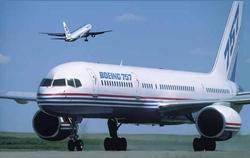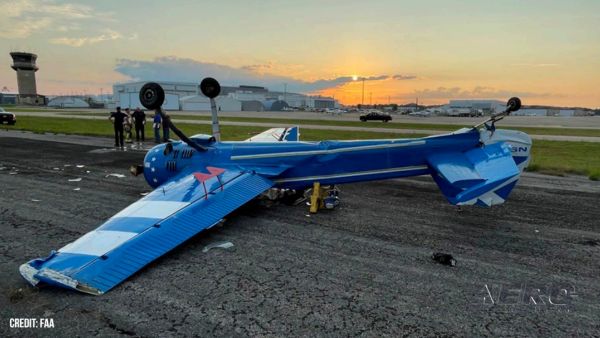Sun, May 23, 2010
Flight To Los Angeles Diverted To Dulles Airport Near
Washington, DC
 The NTSB has released a factual report in its continuing
investigation of a fire aboard a Boeing 757 that diverted to Dulles
Airport (IAD) enroute to the Los Angeles International airport
(LAX) from New York's John F. Kennedy International airport
(JFK).
The NTSB has released a factual report in its continuing
investigation of a fire aboard a Boeing 757 that diverted to Dulles
Airport (IAD) enroute to the Los Angeles International airport
(LAX) from New York's John F. Kennedy International airport
(JFK).
The factual report reads:
"On Sunday, May 16, 2010, about 2117 EDT the pilots on United
Airlines flight 27, a Boeing 757, N510UA, noted a strong acrid
smell and observed smoke from the Captain's lower front windshield.
The incident occurred about 30 minutes into the flight while the
aircraft was level at 36,000 feet MSL. On board the aircraft were 7
crew members and 105 passengers.
"The Captain and First Officer reported that they donned their
oxygen masks and smoke goggles immediately after observing the
smoke and fire. The Captain then gave control of the airplane to
the First Officer and discharged a halon fire extinguisher. The
smoke and fire dissipated but then re-ignited. The Captain obtained
a second bottle from the Purser. The fire remained extinguished
after this second bottle was discharged. At approximately 500 feet
MSL on final approach to Runway19L at IAD, the Captain's windshield
cracked. The landing was uneventful. The airplane cleared
the runway, after which ARFF (Aircraft Rescue Firefighting) entered
the aircraft to check for residual heat and fire. None was found
and the airplane was towed to the gate for deplaning. There were no
evacuation and no injuries to the flight crew or passengers.

File Photo
"Preliminary examination of the cockpit area revealed that the
inner pane of the Captain's windshield had cracked. One of the five
terminal blocks attached to the inside of the lower left windshield
was consumed by fire and the portion of the wire harness associated
with this terminal block was
significantly damaged by fire. There was significant sooting and
paint peeling to the left hand side of the windshield air frame
support.
"The Captain's windshield was moved and will be examined by
Board investigators at the manufacturer."
Two previous windshield fire events on B757-200 aircraft
prompted the NTSB to issue Safety
Recommendation A-07-50. The NTSB says investigators will look
closely at the recovered hardware to determine if this latest event
is related.
More News
From 2021: The Inside Skinny On What Being An ANN Oshkosh Stringer Is All About By ANN Senior Stringer Extraordinare, Gene Yarbrough The annual gathering at Oshkosh is a right of p>[...]
Pilot Asked The Mechanic To Go For A Test Flight Around The Airport Traffic Pattern With Him For A Touch-And-Go Landing, And Then A Full-Stop Landing On May 7, 2025, about 1600 eas>[...]
From 2010 (YouTube Edition): Skiles Reflects On His Ring-Side Seat To An Historic Event Jeff Skiles, First Officer of US Airways Flight 1549, "The Miracle on the Hudson," was the g>[...]
“The FAA conducted a comprehensive safety review of the SpaceX Starship Flight 8 mishap and determined that the company has satisfactorily addressed the causes of the mishap,>[...]
Fuel Remaining A phrase used by either pilots or controllers when relating to the fuel remaining on board until actual fuel exhaustion. When transmitting such information in respon>[...]
 Oshkosh Memories: An Aero-News Stringer Perspective
Oshkosh Memories: An Aero-News Stringer Perspective NTSB Prelim: Diamond Aircraft Ind Inc DA 40 NG
NTSB Prelim: Diamond Aircraft Ind Inc DA 40 NG Classic Aero-TV: US Airways Jeff Skiles-Making History and Looking To The Future
Classic Aero-TV: US Airways Jeff Skiles-Making History and Looking To The Future Aero-News: Quote of the Day (05.26.25)
Aero-News: Quote of the Day (05.26.25) ANN's Daily Aero-Term (05.26.25): Fuel Remaining
ANN's Daily Aero-Term (05.26.25): Fuel Remaining




